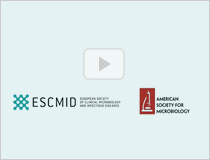Welcome to the ESCMID Videopage
ESCMID - ASM Expert Meeting
25 July 2008, Barcelona, Spain
Chikungunya: an Emergent Infectious Disease
Chikungunya virus is a mosquito-transmitted alphavirus belonging to the family Togaviridae. It was isolated for the first time from a Tanzanian outbreak in 1952. In Africa, the virus is maintained through a transmission cycle between wild primates and mosquitoes such as Aedes luteocephalus, A. furcifer or A. taylori. In Asia, it is transmitted from human to human mainly by A. aegypti and to a lesser extent, by A. albopictus, a high prevalent mosquito in different European countries such as Italy, Frances, Belgium, Serbia, Israel, Greece, Nederlands and Spain. In March 2006, there was a massive outbreak of Chikungunya virus in the French island La Reunion, located in the Indian Ocean. The Chikunguya outbreak came up as an unexpected challenge with >260’000 cases of this infection within a few weeks. Of special concern is the outbreak in Emilia Romagna Region (Italy) in 2007. Epidemiological data collected indicated that indigenous transmission might have occurred in four different localities. Chikungunya virus has been isolated from Aedes albopictus mosquitoes collected in the affected areas.
The main objective of this first ESCMID-ASM Expert Conference is to cover different aspects of the Chikungunya disease from the virus, the main features of the vector to the diagnostic tests and clinical manifestations of the infection.
Genetics of the Chikungunya virus. How do mutations in the virus affect vector specificity and epidemic potential?
Stephen Higgs, Department of Pathology, University of Texas Medical Branch, Galveston, Texas (USA)
In this first lecture Dr. Higgs presented the biochemical and genetic features of the virus and discussed whether a specific mutation in the gene encoding the E1 protein is sufficient to increase the fitness of Chikungunya virus in Aedes albopictus, which in turn could contribute to its rapid spread.
Molecular and serological diagnosis of Chikungunya virus infection
Nadine Litzba, Robert Koch Institut, Belin (Germany)
Dr. Litzba discussed two diagnostic approaches: 1) RT-PCR and the validation of the method; and 2) Detection of IgM and IgG either by immunofluorescence or in-house enzymimmunoassay tests.
Pathophysiological and clinical aspects of the Chikunguya fever
Marc Lecuit, Institut Pasteur and Hôpital Necker, Paris (France)
Dr. Lecuit’s presentation focused on the clinical manifestations of the disease, the classical Chikungunya fever and other symptoms. He also highlighted the neonatal and CNS infections.
An integrative approach to the Biology and Control of the vector Aedes albopictus
David Roiz, Centro di Ecologia Alpina, Edmund Mach Foundation, Trento (Italy)
The entomologist point of view centered on the biology and ecology of the mosquito Aedes albopictus. The dispersion, means and models of Chikungunya transmission were also discussed. The lecture closed with an overview of control methods and a discussion of the effectiveness of integrated programs.
Podium Discussion
Stephen Higgs, Department of Pathology, University of Texas Medical Branch, Galveston, Texas (USA)
Nadine Litzba, Robert Koch Institut, Belin (Germany)
Marc Lecuit, Institut Pasteur and Hôpital Necker, Paris (France)
David Roiz, Centro di Ecologia Alpina, Edmund Mach Foundation, Trento (Italy)

